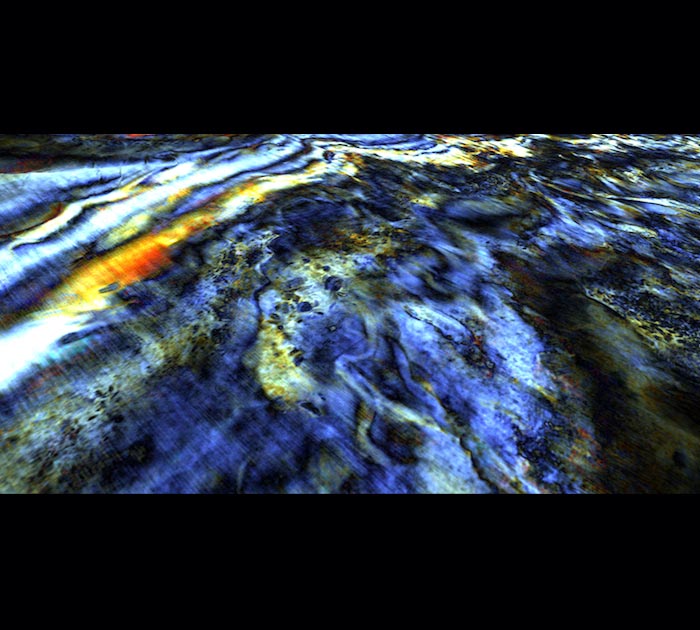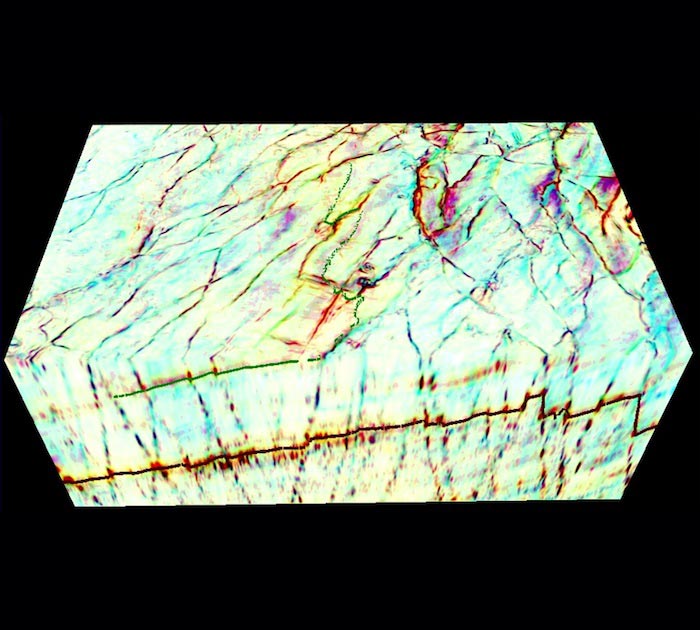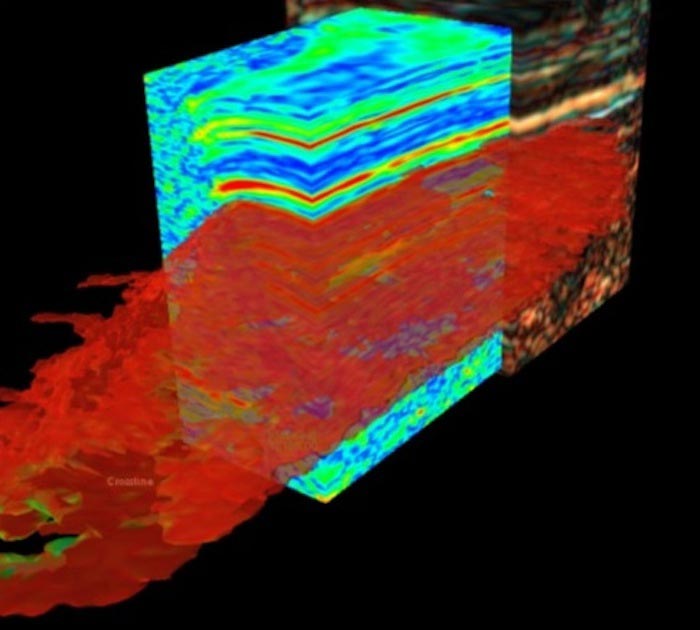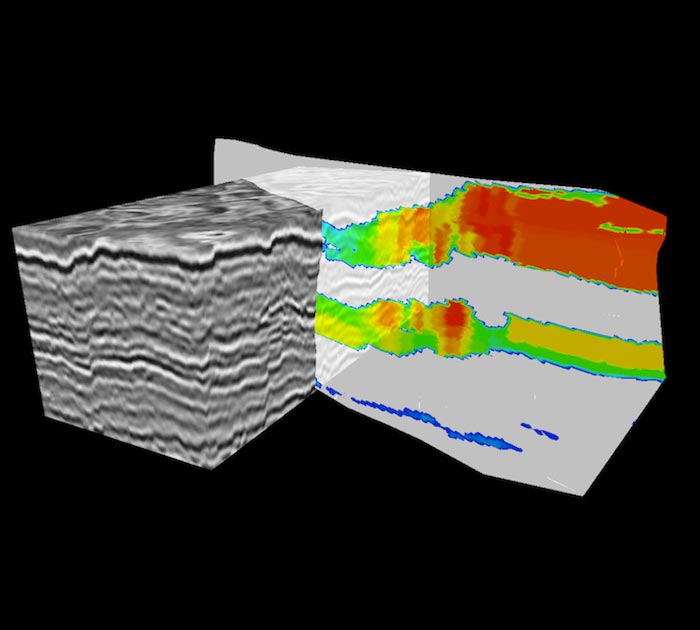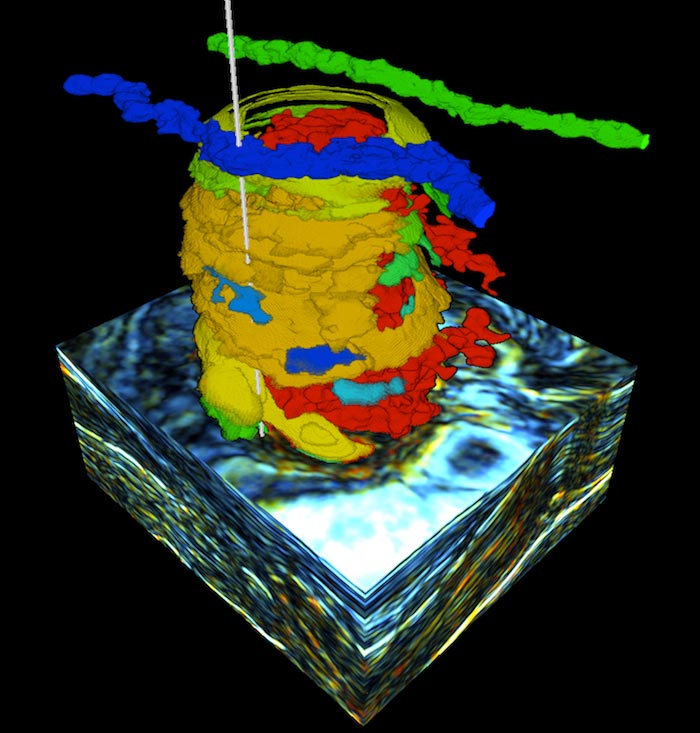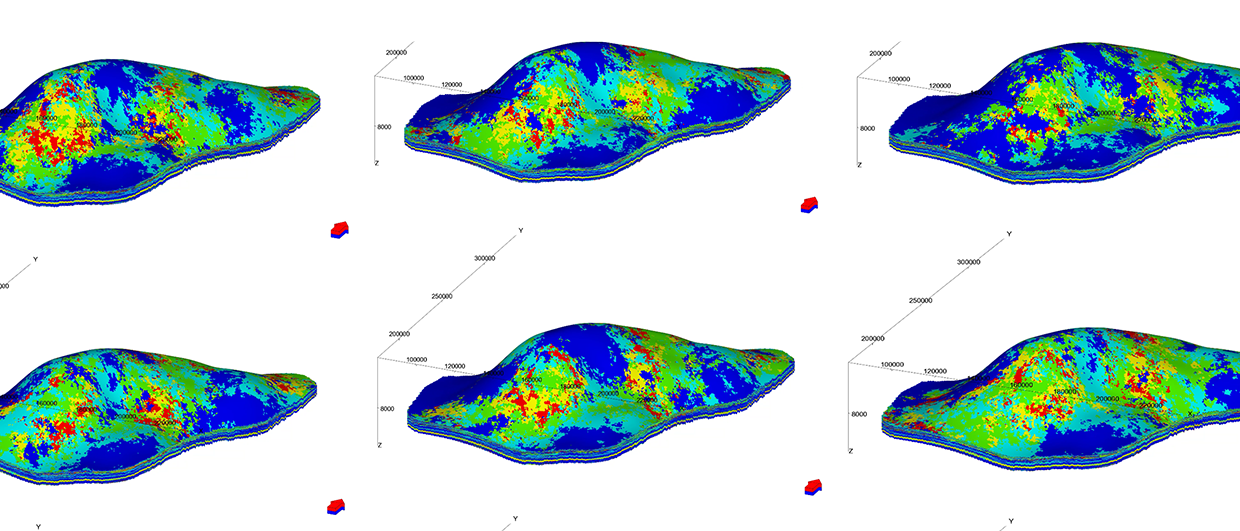onathan Henderson, Managing Director of ffA, brings us the first in a two part series on a new paradigm in understanding the geology of the subsurface and his vision for the future in seismic interpretation.
Understanding the Subsurface
It does not matter whether we are working in frontier exploration or on the development of existing discoveries – we are making decisions that are critical to economic success based on our understanding of subsurface geology.
Geological understanding comes from access to information, and seismic data is the most important source of information that we have about the subsurface. Which is why, as an industry, we spent around US$8 billion on seismic acquisition and processing last year. The quantity of seismic data acquired is staggering. Virtually all of the 11.5 million km² of licensed offshore acreage has seismic coverage, a very large proportion of which is 3D and the same is true onshore. In many circumstances, the problem that we face is not the lack or quality of data, it is our inability to access the information contained and utilise it effectively to better understand the subsurface.
Seismic interpretation is the process of gaining an understanding of the imaged geology from seismic data. Although it is in many respects a sophisticated process, the way many aspects of seismic interpretation are approached is closely linked to paradigm structured methodologies developed for interpreting 2D paper sections. In some cases this is for the very good reason that these techniques work and we understand them. However, seismic interpretation needs to evolve, and evolve quickly, if we are to keep up with the amount of data that is being produced.
The data analysis issues that we face in seismic interpretation have arisen elsewhere and we can learn a lot from work that has been done outside our own environment. For example, in medical imaging, the rise of screening programmes, such as for breast cancer, gave radiologists and physicians a real dilemma in that there were insufficient experts to interpret all the images being generated using their conventional diagnostic workflow. At the same time they were placing even greater demands on their image data because they needed to reliably detect early stage tumours whose image characteristics were by definition very subtle. The problems of too much data, too few trained and experienced interpreters trying to get more accurate, detailed and subtle information from the data would resonate with most geophysicists and geologists. In the medical world an incomplete or inaccurate interpretation can have life or death consequences; in E&P it can result in millions of dollars of wasted expenditure or hundreds of millions of dollars of missed opportunity.
Caption: The Geological Expression Workflow supports a more efficient way of working in seismic interpretations, bridging the gap between processing, interpretation and well planning.
Adapting the Medical Imaging Paradigm
In medical imaging an enormous effort was put into trying to develop automated diagnosis based around computer analysis of images. What became apparent very quickly was that computers cannot replace clinicians. However, substantial improvements in diagnostic effectiveness and efficiency could be achieved when objective data analysis techniques could be combined interactively with clinical expertise. This resulted in development of CAD (computer-aided diagnosis) systems. Without CAD systems, data overload would have made several health screening programmes impractical as there are just not enough trained clinicians to review all the data such programmes produce. A similar approach can be applied to seismic interpretation. Automated interpretation is an unrealistic and arguably an undesirable goal. What we need to be striving for is adapting the medical paradigm, which achieves huge efficiency and productivity gains through making objective analysis a central part of the workflow in an interactive data-driven/user (interpreter) guided process.
How would we utilise such an approach in seismic interpretation and what would it give us? This requires taking a look at what we are trying to achieve. As in medical CAD systems, the interactive data driven/interpreter-guided process should bridge the gap between image formation (seismic acquisition and processing) and interpretation. Also, like medical systems it should enable features of interest to be delineated in a way that respects both the data and what is geologically (pathologically) reasonable based on expert judgement.
Definition of horizon and fault surfaces will be a necessary and important aspect of seismic interpretation for the foreseeable future although there may be more efficient ways of doing this. Where we can increase value immediately is in accessing the information contained in seismic data that is not reflected in horizon or fault surfaces. This information is achieved by analysing the different ways in which geology can be expressed in the data. It can be utilised to better understand the geological variations associated with horizons and faults and to delineate geological elements, such as channels, fan systems, salt bodies, gas chimneys, karsts, injectites etc. that cannot be adequately represented by planar surfaces.
The Geological Expression Workflow
We call the data-driven/interpreter-guided approach for understanding and defining the 3D morphology of the geological elements imaged within the seismic data the Geological Expression approach. As CAD supports a more efficient way of working in medical diagnosis, Geological Expression supports a more efficient way of working in seismic interpretation.
The Geological Expression workflow fully embraces seismic attributes, which have been available for some time, but integrates methods that make it much easier to identify what information is relevant to achieving our objectives and techniques that allow that information to produce ‘tangible’ representations of geological elements that can be taken into the next stages of the overall subsurface workflow.
The keys to this are high resolution colour visualisation and lots of processing power. We have to thank the computer games industry for the fact that we now have access to both of these in standard desktop workstations and high-end laptops. Several years ago it was realised that a computer’s graphics card could be used to process data as well as power the computer’s display. This led to GPGPU or General Purpose Graphics Processor Unit computing. A modern CPU (central processing unit) may have up to sixteen cores giving some capacity for concurrent processing. In contrast, GPUs have hundreds of cores. This means that certain algorithms can run up to 40 times faster on a GPU than on a CPU. As a consequence of the improved performance of CPUs and then the availability of GPUs, at ffA we have seen compute times for volume attribute calculations on desktop hardware shrink by 99.9% in the last 10 years. As a result, processes that used to take a week to complete now run in a minute or two. The power of the GPU is also the reason that we can utilise full colour volumetric displays. Until recently, virtually all volume visualisation systems were limited to displaying at most 256 colours or shades of grey. This meant that data had to be compressed before it could be viewed volumetrically resulting in large information loss. We can now work with volumetric colour displays showing more than 16 million colours. The use of such high resolution colour displays is critical in understanding the subsurface from seismic data as it greatly increases our ability to see, compare and analyse subtle but important features in our data. The Geological Expression workflow has several components in common with a conventional seismic interpretation workflow. The big difference is that at every stage the Geological Expression workflow allows the interpreter to interact seamlessly with information provided through an objective analysis of the geological expressions contained in the data.
The Geological Expression workflow has to reconcile a number of conflicting requirements. One of these is that it should give the interpreter free reign to explore the data and to examine different scenarios and investigate new concepts. By designing the Geological Expression approach around geologically directed workflows, the interpreter can target their approach efficiently without reducing the scope of their investigation.
Bridging the Gap
Considering the here and now: a full Geological Expression workflow, such as embodied in ffA’s GeoTeric™ software, can be realised today. The Geological Expression approach to seismic interpretation bridges the gap between processing and conventional interpretation and increases enormously the amount of data and the level of geological understanding that can be obtained from 3D seismic data. The interactive data-driven/interpreter-guided approach on which the Geological Expression workflow is based is fundamental to being able to deal with the immense and ever increasing volume of seismic data that the industry is investing so heavily in acquiring.
About the Author
 Jonathan Henderson is a physicist with over 20 years of extensive experience in imaging and image analysis. His initial interests were in medical imaging, where he had worked on developing new methods for extracting and quantifying the information contained in x-rays and ultrasound scans. Since joining ffA in 2001, he has used his knowledge of medical image analysis to help the company develop unique seismic image analysis technologies. Jonathan has been Managing Director of ffA for six years, during which time the company, its global customer base and its software portfolio have all expanded substantially; the latest development being the launch of GeoTeric, the Geological Expression software.
Jonathan Henderson is a physicist with over 20 years of extensive experience in imaging and image analysis. His initial interests were in medical imaging, where he had worked on developing new methods for extracting and quantifying the information contained in x-rays and ultrasound scans. Since joining ffA in 2001, he has used his knowledge of medical image analysis to help the company develop unique seismic image analysis technologies. Jonathan has been Managing Director of ffA for six years, during which time the company, its global customer base and its software portfolio have all expanded substantially; the latest development being the launch of GeoTeric, the Geological Expression software.



